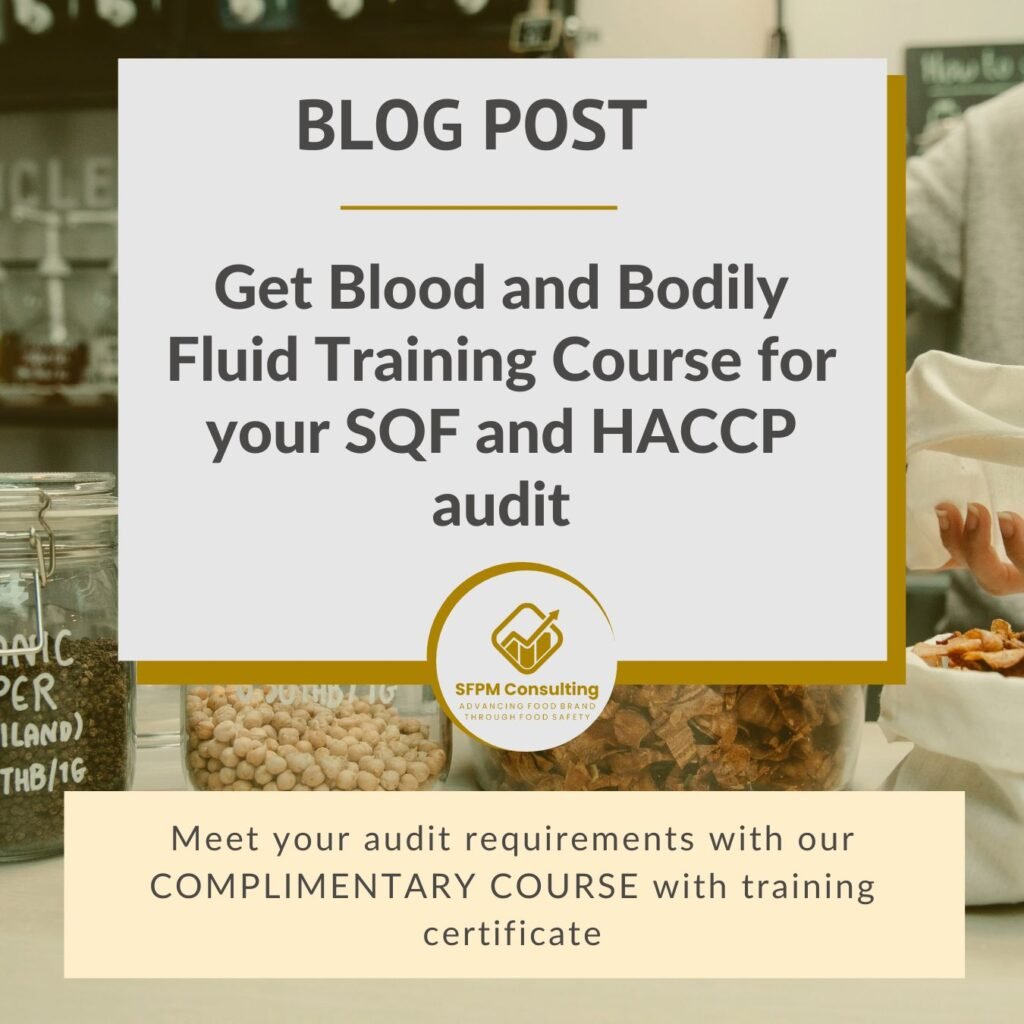[vc_row][vc_column][vc_column_text]In food manufacturing, staying compliant with industry standards like HACCP and SQF is not just about following rules—it’s about ensuring the safety and quality of your products.
One area that requires particular attention is managing blood and bodily fluid contamination. These incidents can happen unexpectedly and, if not handled correctly, can lead to serious consequences.
You need to manage blood and bodily fluid contamination. Make sure that you train your team on how to manage blood contamination.
Meet SQF requirements
HACCP (Hazard Analysis and Critical Control Points) and SQF (Safe Quality Food) are two of the most recognized standards in the food industry. They provide a framework for identifying and controlling potential hazards, including those posed by blood and bodily fluids. Non-compliance with these standards can result in severe penalties, including fines, loss of certification, and even the closure of your facility.
How Does Our Blood Contamination Management Course Help?
Our course on managing blood and bodily fluid contamination is designed to help you comply with HACCP and SQF requirements. You’ll learn about the different types of bodily fluids, their risks, and the proper procedures for cleaning and sanitizing contaminated areas.
We’ll also cover the importance of post-cleaning inspections and record-keeping, so you can ensure that your facility is always audit-ready.
If you are not ready to take this COMPLIMENTARY course, save these best practices.
Best Practices for Managing Blood Contamination
· Immediate Action:When a contamination incident occurs, it’s essential to act quickly. Stop production, contain the area, and remove any contaminated products.
· Proper Equipment:Use the right tools for the job, including leak-proof sharps containers, biohazard bags, and registered disinfectants with broad-spectrum kill claims.
· Thorough Cleaning:Clean the contaminated area multiple times to remove all traces of blood and bodily fluids. This includes a final inspection to verify that the area is safe for production.
· Comprehensive Documentation:Keep detailed records of all incidents and the actions taken to resolve them. This documentation is crucial for demonstrating compliance with HACCP and SQF standards during audits.
Enroll Today on Our Blood and Bodily Fluid Contamination
Don’t leave your compliance to chance. Enroll in our NO COST course on managing blood and bodily fluid contamination to ensure that your facility meets the highest standards of food safety. Upon completing the course and passing the quiz, you’ll receive a training certificate that you can proudly display as evidence of your commitment to safety and quality.
This course is available for a limited time, so don’t wait—sign up today and take the first step toward staying compliant and safe.
[/vc_column_text][/vc_column][/vc_row][vc_row][vc_column][vc_empty_space][vc_btn title=”Get your free course here” color=”primary” align=”center” link=”url:https%3A%2F%2Fsfpmconsulting.reviewnprep.io%2Fdetail%2FVIDEO%2Fbodily-fluid-and-cleaning-policy-training”][/vc_column][/vc_row]

